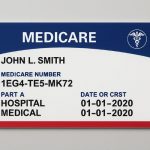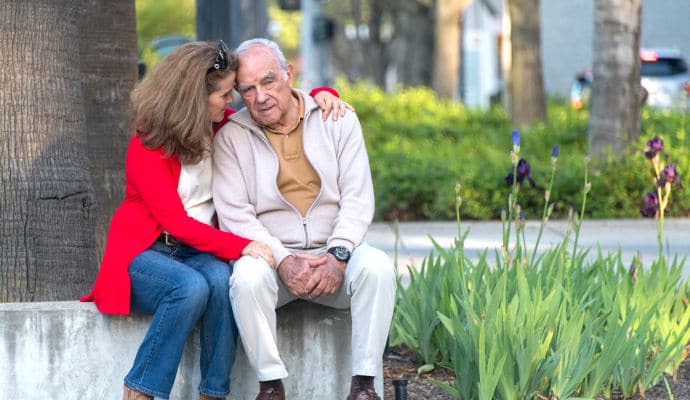A DNR is a signed medical order written by a doctor. DNR stands for Do Not Resuscitate and tells health care providers and emergency medical personnel not to perform CPR on an older adult if they stop breathing or if their heart stops beating.
Understanding a DNR is a profound way to honor a loved one’s wishes for a peaceful and dignified transition. While it’s one of the most difficult conversations you may ever have, it is also one of the most compassionate. It transforms uncertainty into clarity and ensures that their voice guides critical decisions.

Remember, you are not giving up; you are letting go of what prolongs suffering and embracing what honors their life and values. By having this conversation, you are providing the ultimate gift of love and respect, ensuring their final moments are as they intended.
What does DNR (Do Not Resuscitate) mean?
A DNR is a signed medical order written by a doctor.
DNR stands for Do Not Resuscitate and tells health care providers and emergency medical personnel not to do CPR on your older adult if they stop breathing or if their heart stops beating.
The DNR is only a decision about CPR (cardiopulmonary resuscitation).
It doesn’t affect other treatments, such as pain medicine, other medicines, or nutrition.
(For doctor’s orders about other end-of-life treatments, your older adult may want a POLST)
We explain why your older adult might want a DNR, the difference between a pre-hospital and a hospital DNR, how to obtain a DNR, and how to ensure it’s easily accessible in case of an emergency.
Why Would Seniors Want a DNR?
If your older adult has already decided they don’t want CPR, this form allows them to ensure their wishes are honored in an emergency.
Without a DNR or POLST, emergency medical personnel are required to do their best to resuscitate someone who is not breathing or doesn’t have a heartbeat.
No matter what you say, they cannot stop these efforts without a signed medical order.
The Difference Between Pre-Hospital and Hospital DNR
DNR forms are used in hospitals so the staff will know how to respond in an emergency.
However, DNR forms can also be used outside of a hospital by emergency medical personnel or in assisted living.
Those are often called a pre-hospital DNR.
Ensure you have the proper form for your older adult’s current situation. Some people may need both.
VIDEO: What is a Do Not Resuscitate Order (DNR)?
How to get a legally valid DNR
After talking with your older adult, discuss their CPR preferences with their doctor.
Their doctor must sign the official DNR form and use the appropriate forms for your older adult’s state.
Some states have additional requirements, so be sure that your older adult is complying with all necessary rules, such as using a specific color of paper for the form and wearing a DNR bracelet.
If the state’s requirements aren’t met, the DNR isn’t legally valid, and emergency medical services providers don’t have to honor it.
Many states’ forms are online at the state health department’s website.
Note: If your older adult has a DNR and moves from one state to another, they must complete a new DNR form that’s legally valid in their new home state.
Make sure the DNR is easily accessible
A DNR can only be honored if people know it exists.
Notify doctors, nurses, caregivers, family members, and assisted living staff about your older adult’s wishes and show that they have a signed DNR.
Make sure doctors, hospitals, and assisted living communities have the DNR on file and/or post it prominently in your older adult’s room.
You may also want to print backup copies to keep in your hospital essentials kit and give to family members.
A DNR should also be posted prominently in your older adult’s home – emergency medical teams are likely to look for it near their bed or on the refrigerator.
Special Note: Some states require a DNR medical bracelet. If that’s the case, the person must be wearing the bracelet for medical personnel to honor the DNR.
Final Thoughts about DNR Orders
Understanding a DNR is a profound way to honor a loved one’s wishes for a peaceful and dignified transition. While it’s one of the most difficult conversations you may ever have, it is also one of the most compassionate.
It transforms uncertainty into clarity and ensures that their voice guides critical decisions. Remember, you are not giving up; you are letting go of what prolongs suffering and embracing what honors their life and values.
By having this conversation, you are providing the ultimate gift of love and respect, ensuring their final moments are as they intended.
Recommended for you:
- The Five Wishes Living Will Makes It Easier to Plan for End-of-Life
- The Reality of CPR for Seniors: Get the Facts
- Which End-of-Life Form Is Needed? POLST vs DNR
About the Author

Connie is the founder of DailyCaring.com and was a hands-on caregiver for her grandmother for 20 years. (Grandma made it to 101 years old!) She knows how challenging, overwhelming, and all-consuming caring for an older adult can be. She also understands the importance of support, especially in the form of practical solutions, valuable resources, and self-care tips.













Thank you for this article.
-Sincerely
Rebecca
You’re welcome! We’re so glad it’s helpful.
All of this information suggests that a person should have a DNR, rather than NOT have a DNR. Too many people, seniors in particular, are convinced that if rescusitateed, they would have to live life on artificial life support, which is simply not true. (This was the reason my mother gave me when she told me she did not want to be “brought back” if she went into cardiac arrest.) – – – I told her: Mother, one has little or nothing to do with the other – – – but she just didn’t comprehend the distinction. – – – Subsequently, she signed a DNR and, after receiving a head injury from a fall, 911 just let her go when, most likely, they could have revived her. DNR’s are misleading!!!!!!!
I am convinced that an untold number of people wrongly make the choice to sign a DNR for reasons that are not applicable to the potential of living a normal, useful life if they are resuscitated following a cardiac arrest.
If you were to ask these same people to sign a form saying: “Yes, I want to die” – they would not sign it. But, because of the misunderstanding of the effects of resuscitation, they sign a DNR.
Go back to the drawing boards people!!!!!!!!!! You are misinforming and killing our seniors.
I’m sorry for your loss.
This article explains what a DNR is, what treatments the document covers, and how to put it into place.
Each person needs to make the choice that’s right for them and needs to be aware of the facts before they can make an informed decision.